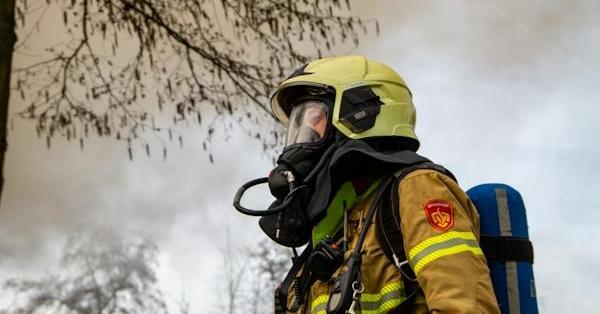Firefighters confront numerous challenges in the line of duty. It includes a concealed and insidious threat of cancer associated with Aqueous Film-Forming Foam (AFFF).
AFFF has been a crucial tool in the firefighting arsenal, recognized for its efficacy in rapidly suppressing flammable liquid fires. However, as the veil on its composition lifted, particularly the presence of per- and polyfluoroalkyl substances (PFAS), a disconcerting connection emerged. It pertained to heightened cancer risks for those who valiantly face blazes to safeguard lives and property.
This article discusses the pressing issue of firefighters on the frontlines confronting the alarming health risks posed by AFFF exposure.
The Growing Evidence of Cancer Risks
The growing body of evidence linking AFFF exposure to heightened cancer risks among firefighters is raising concerns within the community. Numerous studies have established a compelling association between exposure to AFFF and an increased likelihood of various cancers.
These findings underscore the urgency of addressing the occupational hazards posed by this widely used firefighting foam.
Environmental Health News reports the case of Gary Flook, a veteran firefighter with 37 years of service in the Air Force. Flook’s story highlights the silent danger firefighters face, having regularly trained with AFFF without knowledge of its toxic nature.
At the age of 45, Flook received a devastating diagnosis of testicular cancer that necessitated an orchiectomy followed by chemotherapy. His experience mirrors that of many others in the firefighting community.
Moreover, recently, a groundbreaking federal study was conducted drawing on banked blood from Air Force servicemen. It reveals a direct association between per- and polyfluoroalkyl substances (PFAS) chemicals found in the blood of military personnel and testicular cancer.
The study indicates elevated PFAS levels in the bloodstreams of firefighters, with a strong correlation among those diagnosed with testicular cancer. It sheds light on the intricate connection between AFFF exposure and the alarming increase in cancer risks among those regularly exposed.
A Fight for Recognition and Compensation
Firefighters, facing the insidious threat of cancer, find themselves in a formidable battle for recognition and compensation. Despite the longstanding use of AFFF, legal action against manufacturers has only gained momentum recently.
Forbes points out a significant challenge in proving the link between cancer and PFAS exposure. This challenge was compounded by the Environmental Protection Agency’s delayed public statement on the matter, issued only in 2009.
The delay has left many uninformed about the health risks associated with AFFF. It hindered firefighters from establishing a direct connection between their illnesses and exposure to the foam.
The turning point in this legal saga came with the revelation that manufacturers were aware of the AFFF foam cancer link. This disclosure has empowered plaintiffs to substantiate claims of negligence and liability on them.
TorHoerman Law notes that legal battles have unfolded as firefighters seek compensation for mounting medical bills and lost wages. Notably, the lawsuits, numbering over 6,000 as of mid-October 2023, are primarily directed at manufacturers.
Protecting the Future of Firefighting
The imperative to protect the future of firefighting necessitates a paradigm shift towards safer alternatives.
According to Toxic-Free Future, the U.S. Department of Defense has issued a revised military specification mandating PFAS-free firefighting foam. This release, mandated by the 2020 National Defense Authorization Act, signifies a pivotal step in addressing the persistent issue of PFAS contamination.
With the adoption of these updated military specifications, states across the nation can now incorporate PFAS-free foam for various applications. This development represents a noteworthy triumph for safeguarding clean drinking water and prioritizing the well-being of firefighters.
Additionally, it presents an opportunity to transition towards safer foams, aligning with a broader commitment to environmental and public health.
Moreover, the focus on safeguarding the future involves advocating for stricter regulations governing the use and disposal of AFFF foam. Recognizing the pervasive nature of PFAS contamination, particularly in water supplies, underscores the urgency of regulatory measures to prevent further harm.
In tandem with these efforts, there is a pressing need for mandatory PFAS testing in fire stations and training facilities. This proactive approach ensures early detection and intervention, protecting firefighters from unknowingly exposing themselves to these harmful substances.
In conclusion, the exploration of AFFF and its inherent risks to firefighters underscores a pressing call to action. The link between AFFF exposure and heightened cancer risks demands immediate and comprehensive measures to safeguard those who dedicate their lives to public safety.
It is only through unified efforts that we can build a resilient future for firefighting. The one that prioritizes the health and well-being of those who selflessly stand on the frontlines. Together, let us turn awareness into action and transform the landscape of firefighting for the better.

